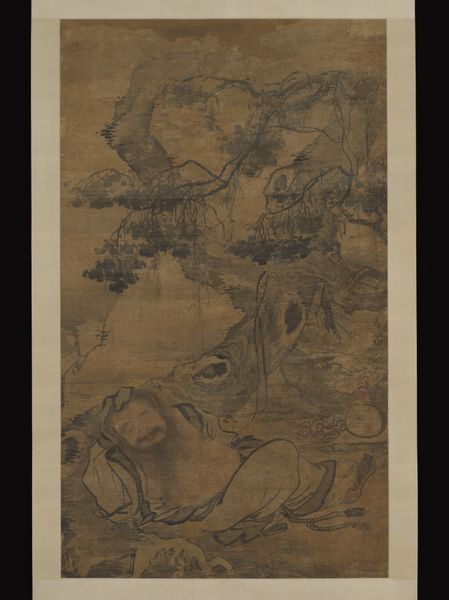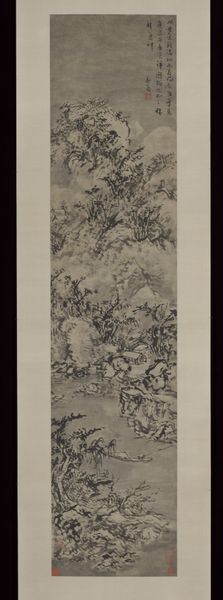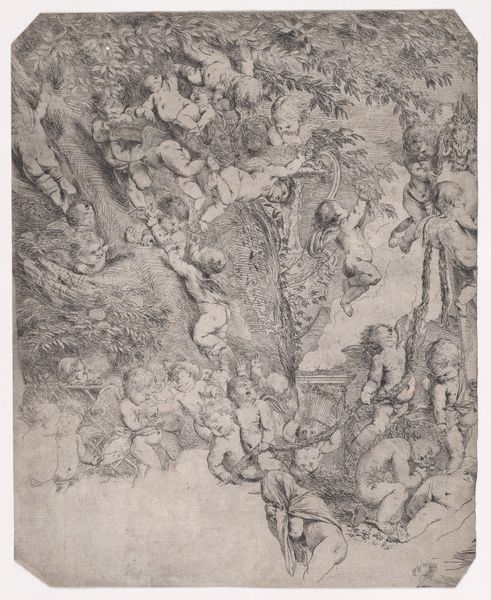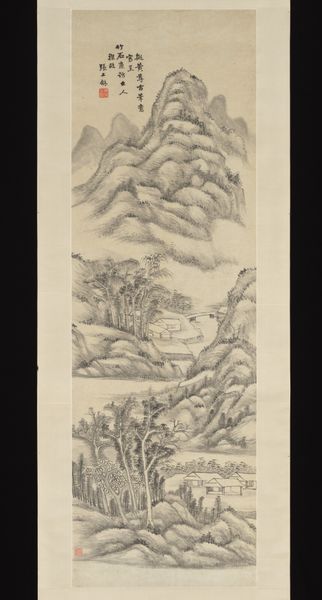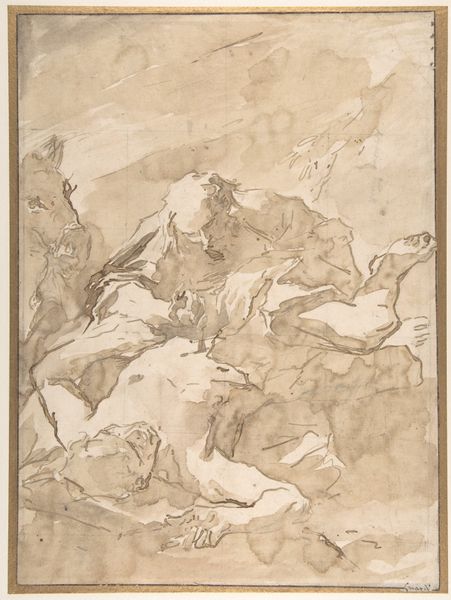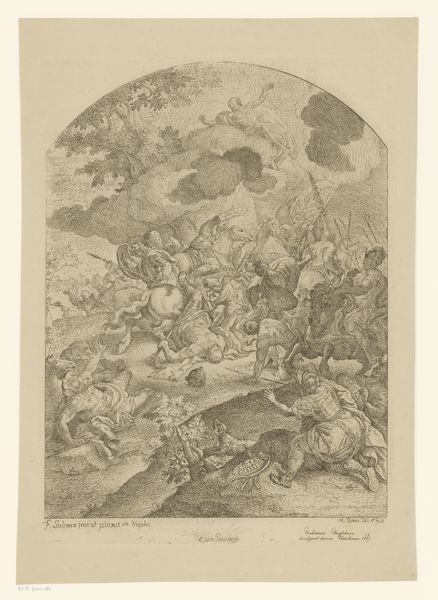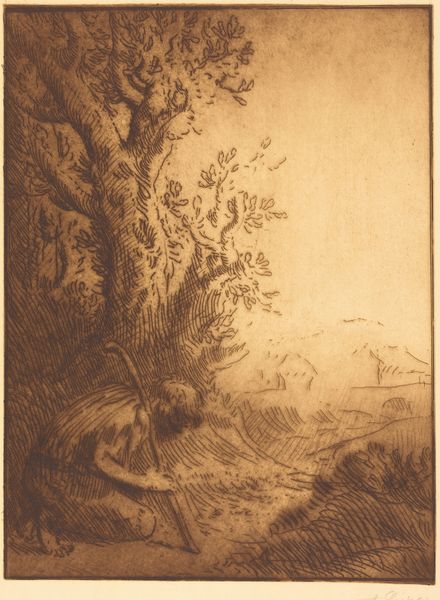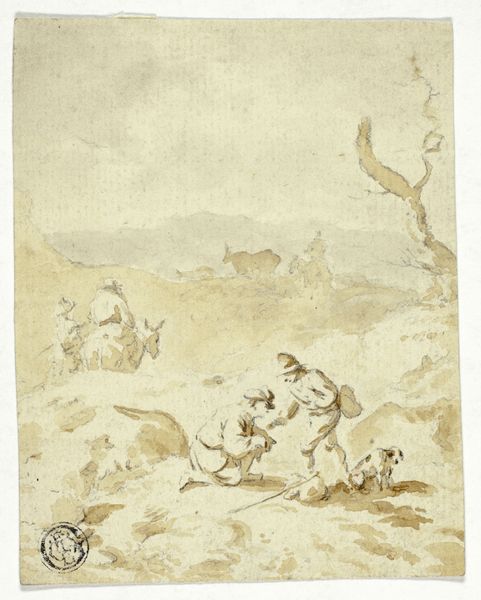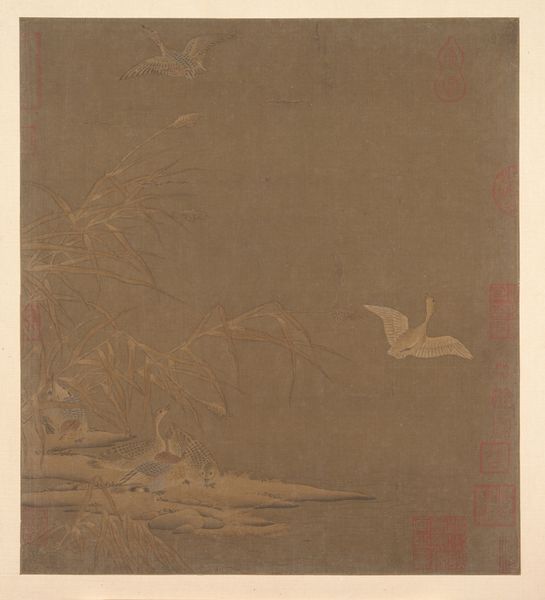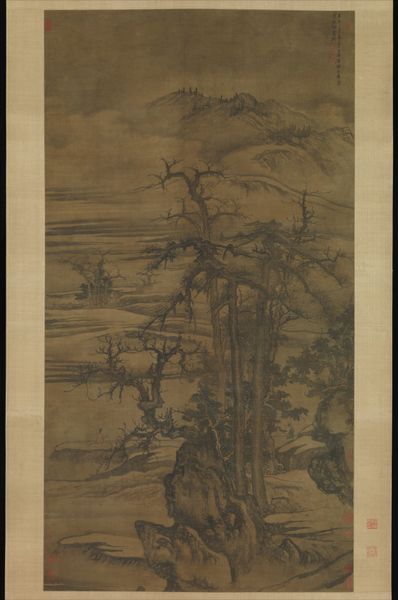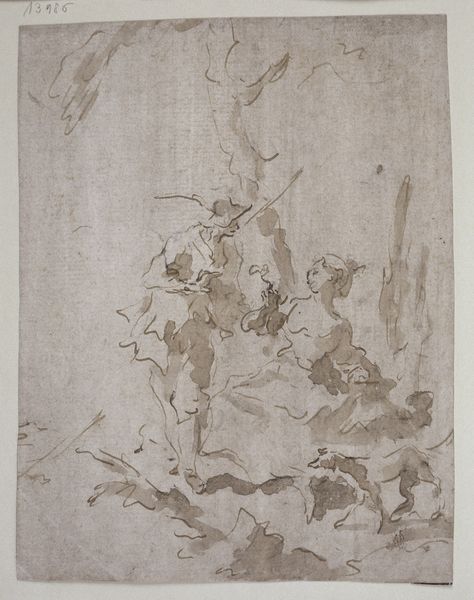
Traveling through Snow-Covered Mountains 1300 - 1368
0:00
0:00
drawing, paper, ink
#
drawing
#
natural stone pattern
#
toned paper
#
ink painting
#
asian-art
#
landscape
#
paper
#
21_yuan-dynasty-1271-1368
#
ink
#
geometric
#
underpainting
#
mountain
#
china
#
monochrome
Dimensions: Image: 38 3/4 × 21 1/2 in. (98.4 × 54.6 cm) Overall with mounting: 85 1/8 × 27 3/4 in. (216.2 × 70.5 cm) Overall with knobs: 85 1/8 × 31 1/4 in. (216.2 × 79.4 cm)
Copyright: Public Domain
Curator: There's a subdued power to this piece, wouldn’t you say? Editor: Absolutely. At first glance, I feel enveloped in stillness. The muted tones lend it a timeless, almost dreamlike quality. Is it just me or does the scene possess some spiritual symbolism? Curator: It might. We're looking at “Traveling through Snow-Covered Mountains,” attributed to Yao Yanqing, also known as Tingmei. This ink drawing on paper dates back to the Yuan Dynasty, sometime between 1300 and 1368. Editor: Snow landscapes appear a lot in paintings of this era; does that relate to specific social contexts? I'm curious to understand why snowy mountains are used to elicit specific sentiments and were often recurring emblems of the Yuan period. Curator: I suspect there is a subtle cultural allusion to perseverance, in enduring challenging external forces as well as an analogy of spiritual cultivation. This theme resonated powerfully during a time of foreign rule. Also notice how the artist manipulates monochrome ink to depict light and shadow, conveying depth. What appears to be a dark mass is, in fact, skillfully rendered to show texture and distance. Editor: Yes, that manipulation is so evident in the mountains which dominate the upper portion of the artwork, while closer to us there appears to be village buildings. It also echoes back to the ancient Silk Road trade route, connecting empires via vast geographical distances. Curator: Correct! You might see the mountain path winds, becoming almost labyrinthine – mirroring life’s journeys. The cultural connotations of monochromatic ink is important as well; to me it projects understated dignity, not to be misconstrued as sadness or emptiness. The drawing is a reflective piece that emphasizes inner strength over external grandeur. Editor: So it's not just about a literal journey through the landscape, but also about an individual's spiritual quest? The visual emphasis evokes a quietness and meditation for each viewer to reflect upon and internalize. Curator: Exactly, which is precisely what differentiates artwork from the Yuan Dynasty in relation to contemporary paintings during that historical period. And in its own quiet, resolute way, this small ink drawing on paper conveys messages that are just as vivid today as they were centuries ago. Editor: You know, thinking about our conversation, this artwork exemplifies how natural elements, like mountains and snow, transcend simple aesthetic appeal, conveying deeply encoded symbolic values within cultural memory. Curator: And that interplay of personal meaning and grand historical narratives makes viewing art such a captivating experience!
Comments
No comments
Be the first to comment and join the conversation on the ultimate creative platform.
